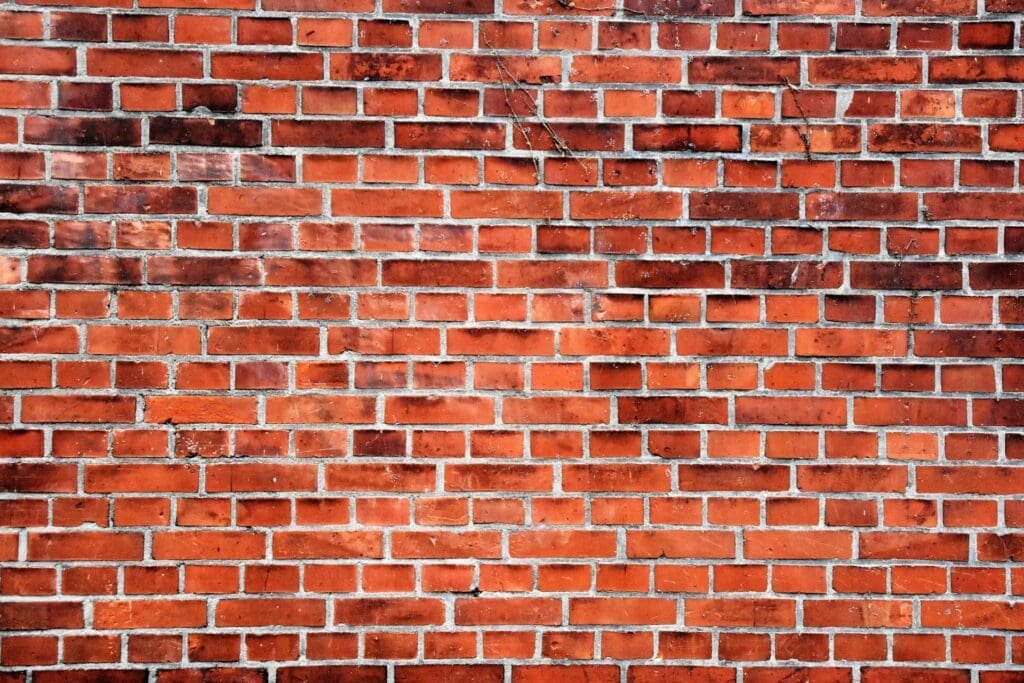Intro To Header and Stretcher in Construction
“The details are not the details. They make the design,” said Charles Eames, and it rings especially true in brickwork.
Understanding the nuances of headers and stretchers is key to mastering bricklaying.
In this blog post, we will examine what headers and stretchers are, their common features, and their practical applications.
We will also compare the two to provide a well-rounded understanding of their roles in construction.
Let’s get started and lay some brick.
Table of Contents
Header and Stretcher in Construction
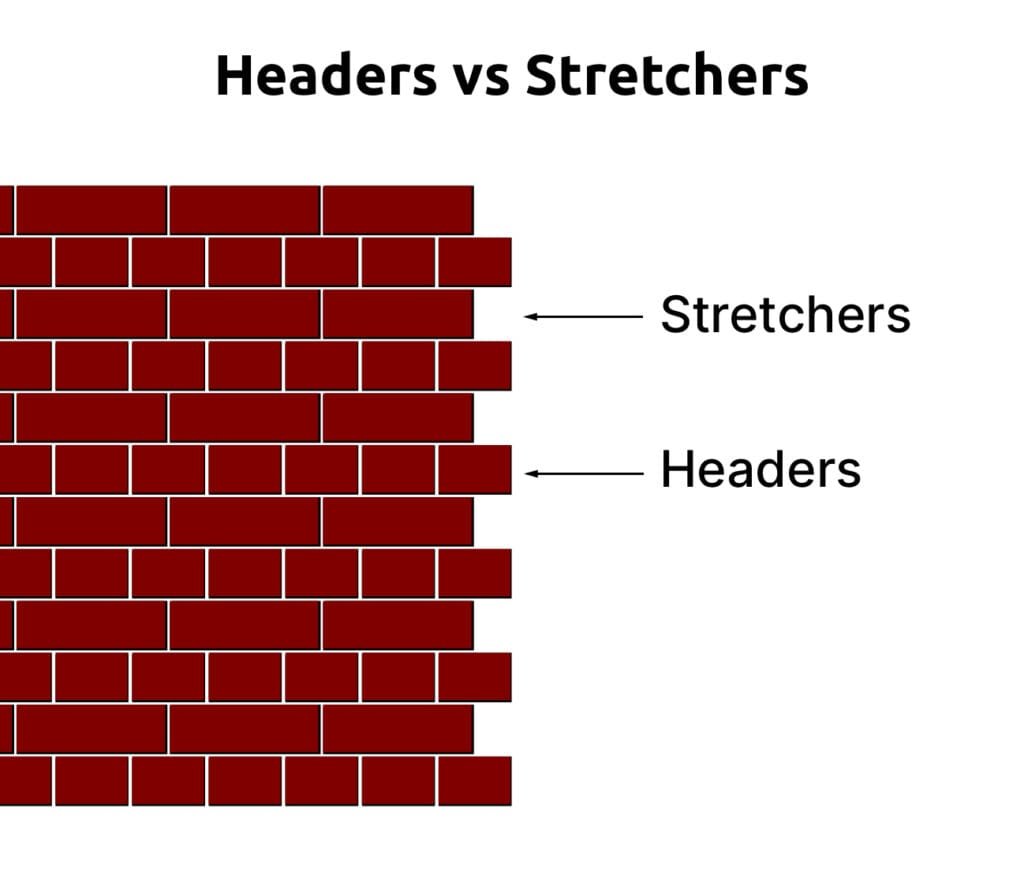
Header
A header in construction refers to a brick or stone that is laid with its end facing the front of the wall. Its primary function is to tie two or more wythes (layers) of a wall together.
Common Features of Headers
- Orientation: Laid perpendicular to the face of the wall
- Purpose: Provides structural stability
- Application: Used in both load-bearing and non-load-bearing walls
Header Usage Examples
- Multi-wythe walls to bond layers
- Brick bonds like English bond and Flemish bond
Stretcher
A stretcher is a brick or stone laid with its long side parallel to the face of the wall. Stretchers are typically used to build the visible exterior of a wall and are more common in single-wythe walls.
Common Features of Stretchers
- Orientation: Laid parallel to the face of the wall
- Purpose: Constructs the façade of a wall
- Application: Commonly seen in single-wythe walls
Stretcher Usage Examples
- Standard brick wall construction
- Single-wythe walls for residential buildings
Comparison Table
| Feature | Header | Stretcher |
|---|---|---|
| Orientation | Perpendicular to the face | Parallel to the face |
| Primary Use | Tying multiple wythes together | Visible exterior of a wall |
| Application Example | Multi-wythe walls | Single-wythe walls |
For more detailed information on bricklaying terms and masonry techniques, you can visit this comprehensive guide from Archtoolbox.
Why Bricks Are Laid in a Stretcher Pattern
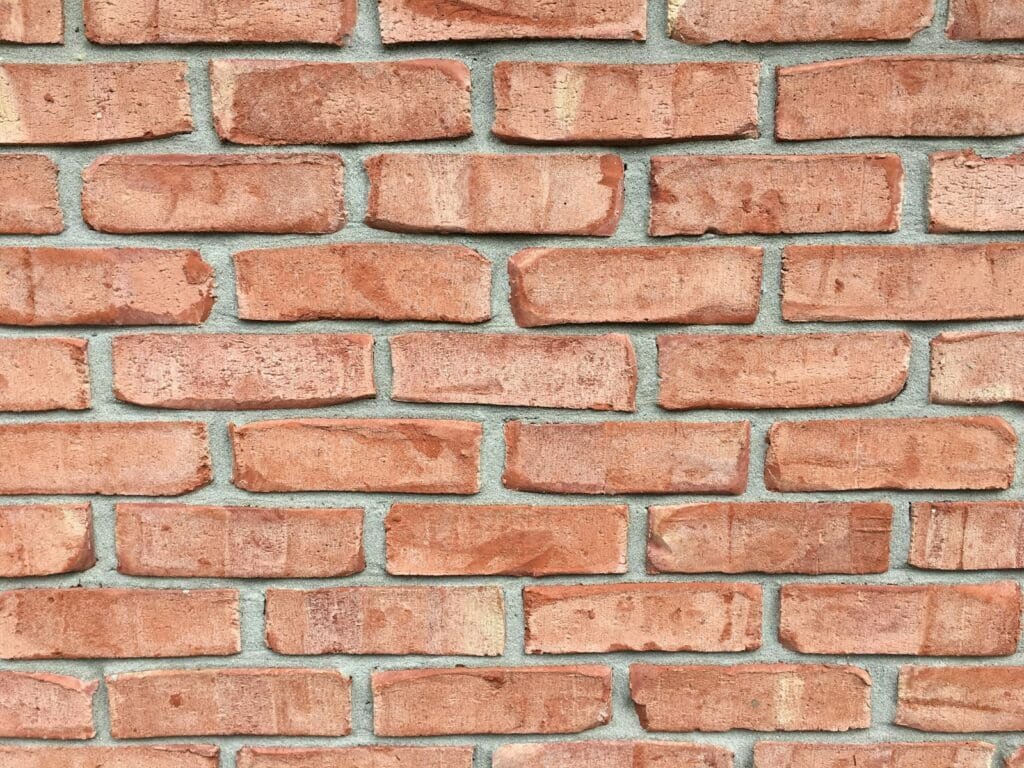
Stretcher Pattern Basics
A stretcher pattern, also known as a running bond, refers to bricks being laid with their long side parallel to the face of the wall. This pattern is one of the most common in bricklaying and offers several practical and aesthetic benefits.
Key Characteristics of Stretcher Patterns
- Uniform Appearance: The pattern creates a consistent, linear look that is visually appealing.
- Ease of Installation: The straightforward layout makes it easier for masons to lay bricks quickly and efficiently.
- Structural Integrity: While primarily aesthetic, the staggered joints (where each brick is placed halfway over the bricks below) help distribute the load more evenly across the wall.
Benefits of Using Stretcher Patterns
- Cost-Effective Construction: The simplicity of the stretcher pattern requires less skilled labor, reducing construction costs.
- Time Efficiency: Masons can lay bricks faster in a stretcher pattern due to its simplicity, speeding up project timelines.
- Flexibility: Suitable for both load-bearing and non-load-bearing walls, making it versatile for various construction needs.
- Low Material Waste: The consistent use of full bricks minimizes cutting and material waste, optimizing resource use.
Enhancing Wall Strength with Pattern Variety
While the stretcher pattern is effective, combining it with other patterns can enhance a wall’s strength and visual appeal. Patterns like Flemish bond or English bond integrate both headers and stretchers, creating more robust structures by better distributing loads and interlocking bricks more securely.
Combining Patterns for Optimal Results
- Flemish Bond: Alternates headers and stretchers in each row, providing both aesthetic variation and increased stability.
- English Bond: Features alternating rows of headers and stretchers, combining the structural benefits of both styles.
Practical Applications
Stretcher patterns are ideal for several construction settings:
- Residential Buildings: Commonly used in single-wythe walls for homes due to its quick installation and clean look.
- Facade Construction: Ensures a neat, uniform exterior that enhances curb appeal.
- Boundary Walls: Often employed for garden or perimeter walls where aesthetics and cost-efficiency are important.
These various aspects of the stretcher pattern explain why it is a preferred choice in modern construction, balancing ease of installation, cost, and structural requirements.
Brick Counting in a Stretcher Bond
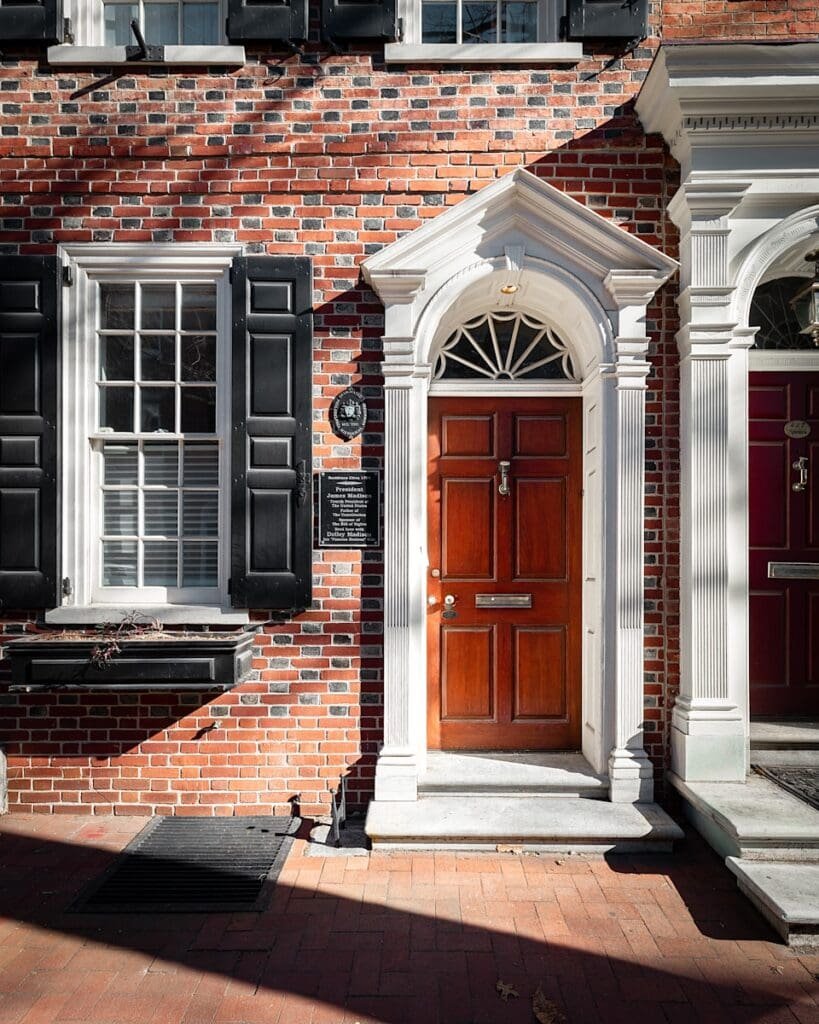
Calculating the Number of Bricks
Determining the number of bricks required for a stretcher bond involves a few straightforward steps. Accurate planning can save both time and money on a construction project.
Basic Formula for Brick Calculation
To estimate the number of bricks, you need to know the dimensions of the wall and the size of each brick. The general formula is:
Number of Bricks = (Wall Area / Brick Area) * (1 + Waste Factor)
Factors Influencing Brick Count
- Wall Dimensions: Measure the length and height of the wall to calculate the total area.
- Brick Size: Common brick dimensions in the United States are 8 inches long, 2.25 inches high, and 3.75 inches deep.
- Waste Factor: Typically, an additional 5-10% of bricks are included to account for wastage during construction.
Example Calculation
Let’s walk through an example calculation for a standard wall.
- Wall Dimensions: 10 feet wide by 8 feet high.
- Brick Dimensions: Each brick is 8 inches long x 2.25 inches high.
First, convert the wall dimensions to inches:
- Width: 10 feet x 12 inches/foot = 120 inches
- Height: 8 feet x 12 inches/foot = 96 inches
Calculate the wall area in square inches:
Wall Area = Width x Height = 120 inches x 96 inches = 11,520 square inches
Next, find the area of each brick’s face:
Brick Area = 8 inches x 2.25 inches = 18 square inches
Now, calculate the number of bricks needed without the waste factor:
Primary Brick Count = Wall Area / Brick Area = 11,520 / 18 ≈ 640 bricks
Finally, add a waste factor of 10%:
Total Brick Count = 640 * 1.10 = 704 bricks
Using Different Wall Patterns
While the stretcher bond is straightforward, it’s essential to understand that other brick patterns may require a different brick count due to varying arrangements. For example:
- Flemish Bond: Alternates headers and stretchers within the same row, potentially requiring more bricks.
- English Bond: Alternates rows of headers and stretchers, impacting the overall brick requirement.
Practical Considerations
Keep in mind these practical tips when calculating and ordering bricks:
- Ordering: Always order a bit more than your calculated amount to account for damages and future repairs.
- Delivery: Ensure you have proper storage space to keep bricks dry and ready for use.
- Wastage Management: Properly manage and minimize wastage to save costs.
Flemish and Stretcher Bonds in Masonry Construction
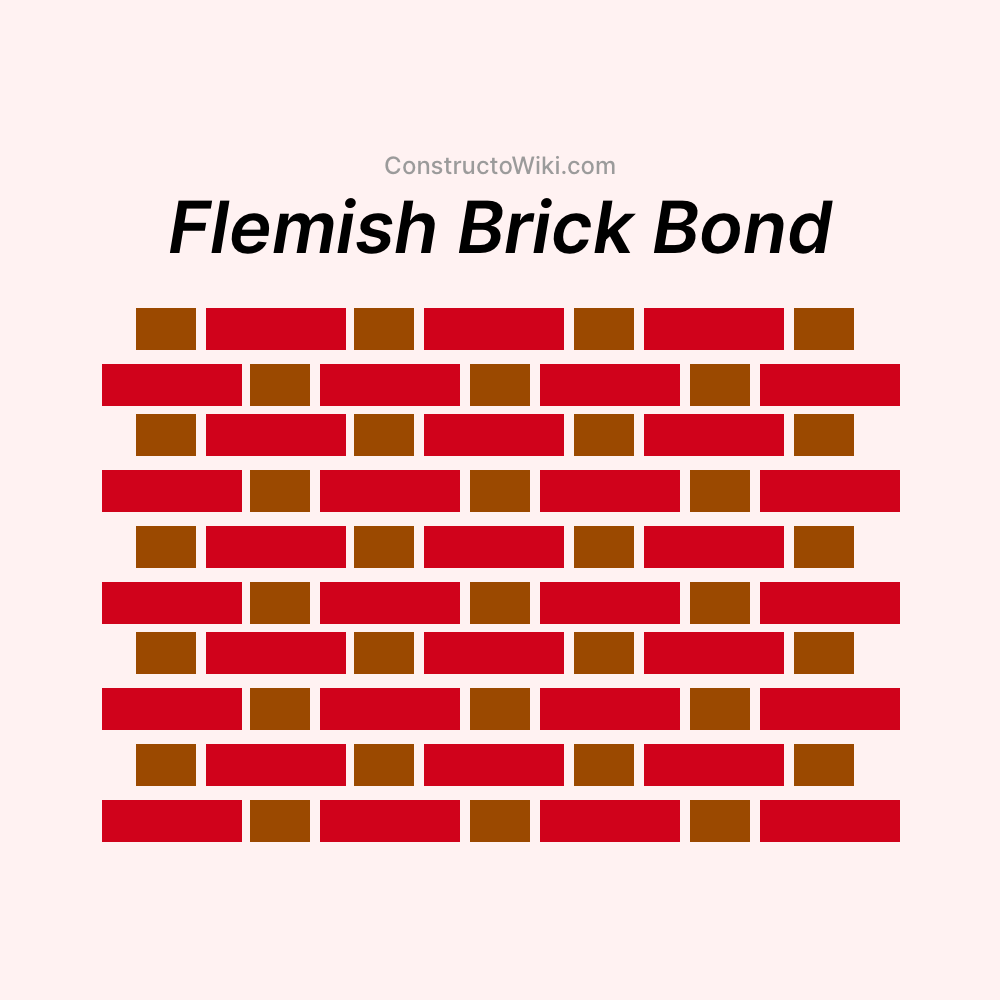
Flemish Bond
The Flemish bond, also known as the Dutch bond, is a traditional pattern where each course (or row) alternates between headers and stretchers. This bond is known for its unique aesthetics and historical significance in construction.
Key Characteristics of Flemish Bonds
- Aesthetic Appeal: Alternating headers and stretchers give the wall a distinctive, patterned look.
- Increased Strength: The alternating pattern interlocks the bricks, improving the wall’s structural integrity.
- Versatility: Can be applied to both load-bearing and non-load-bearing walls.
Implementation of Flemish Bonds
- Residential and Historical Buildings: Frequently seen in older residential buildings and historical structures due to its traditional appeal.
- Boundary Walls: Often used in garden and boundary walls where aesthetic appeal is a primary concern.
Comparing Flemish and Stretcher Bonds
While both Flemish and stretcher bonds serve important functions in masonry, they have distinct differences:
| Feature | Flemish Bond | Stretcher Bond |
|---|---|---|
| Pattern | Alternates headers and stretchers in each row | Consists entirely of stretchers laid parallel to the face of the wall |
| Strength | Higher due to interlocking pattern | Lower compared to Flemish bond but still provides adequate strength |
| Aesthetics | Visually appealing with a complex pattern | Simpler and more uniform appearance |
| Construction Complexity | More complex, requires skilled labor | Simpler, faster to install |
Enhanced Masonry Through Bond Combinations

Composite Patterns for Optimal Masonry
Combining different brick bonds can further enhance the structural integrity and aesthetic value of masonry work. This approach leverages the strengths of each bond pattern.
Typical Composite Patterns
- English Bond: Alternates rows of headers and stretchers, providing a balance between structural strength and construction simplicity.
- Rat-Trap Bond: Utilizes bricks in a vertical position, creating a cavity within the wall that can enhance thermal insulation and reduce material use.
Benefits of Combining Patterns
- Enhanced Strength: Composite patterns can better distribute loads and improve the wall’s overall stability.
- Aesthetic Variety: Different patterns can add visual interest and distinct character to the structure.
Practical Applications of Composite Patterns
- High-Rise Buildings: Use strong bond patterns like English bond for the lower floors and simpler bonds like stretcher bond for the upper floors.
- Architectural Features: Composite patterns can be used to create aesthetic features like decorative walls and facades.
Wrapping Up Bricklaying Patterns: Headers and Stretchers
In conclusion, headers and stretchers are vital elements in masonry construction. Headers, laid perpendicular to the wall, add structural stability and are often used in multi-wythe walls.
Stretchers, laid parallel to the wall, create a clean exterior finish, prevalent in single-wythe walls.
Understanding their features, applications, and differences is key to effective masonry work.
Frequently Asked Questions – FAQs
What is a header in construction?
A header is a brick or stone laid with its end facing the front of the wall, used to tie multiple wythes together, adding structural stability.
What is a stretcher and how is it used?
A stretcher is a brick laid with its long side parallel to the wall’s face, used primarily for constructing the visible exterior of a wall, often in single-wythe walls.
What are the common features of headers?
Headers are oriented perpendicular to the wall, enhance structural stability, and are used in both load-bearing and non-load-bearing walls.
What are the typical features of stretchers?
Stretchers are laid parallel to the wall’s face, constructing the façade of the wall, commonly found in single-wythe walls.
What are the benefits of using a stretcher pattern?
Stretcher patterns provide a uniform appearance, ease of installation, cost-efficient construction, time efficiency, flexibility for various walls, and low material waste.
What is the difference between Flemish bond and stretcher bond?
Flemish bond alternates headers and stretchers in each row, providing higher strength and aesthetic appeal, while stretcher bond consists of stretchers laid parallel, offering simpler, uniform, and quicker installation.
